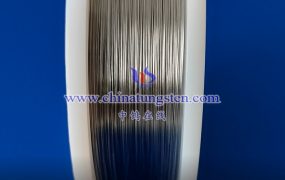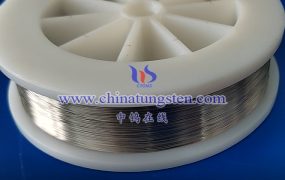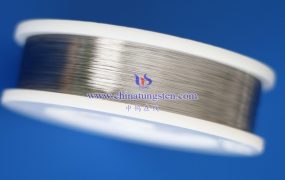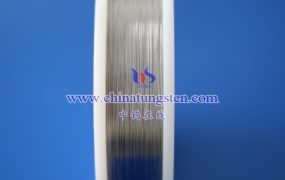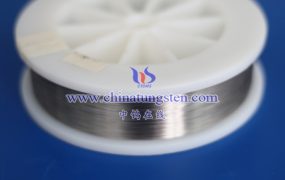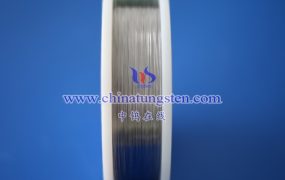The heat treatment process is a critical step in producing high-performance black tungsten wire, aimed at improving its microstructure, relieving internal stresses, and enhancing ductility and mechanical properties. Below is the general process and key points for the heat treatment of black tungsten wire:
1. Background of Heat Treatment
Black tungsten wire typically refers to unpolished or untreated tungsten wire with a black oxide layer on its surface, commonly used in filaments, electronic devices, or high-temperature applications. Heat treatment optimizes the wire’s performance, reduces brittleness, and enhances processability by controlling temperature, atmosphere, and duration.
2. Heat Treatment Process (1) Cleaning
- Purpose: Remove surface oil, oxides, or other impurities to ensure effective heat treatment.
- Method:
- Use organic solvents (e.g., alcohol or acetone) for ultrasonic cleaning.
- If necessary, employ chemical cleaning (e.g., acid or alkali washing) to remove oxide layers.
- Thoroughly dry the wire after cleaning to prevent moisture from affecting subsequent heat treatment.
(2) Annealing (Core Heat Treatment Step)
Annealing is the key step in heat treatment, used to relieve internal stresses and crystal defects caused by cold working, improving ductility.
- Temperature:
- Typically ranges between 1200°C and 1800°C, depending on the wire’s diameter and application.
- Fine wires (<0.1 mm) usually require lower temperatures (around 1200–1400°C) to avoid excessive grain growth.
- Coarser wires (>0.5 mm) may require higher temperatures (1500–1800°C).
- Atmosphere:
- Conducted in a reducing atmosphere (e.g., hydrogen) or inert atmosphere (e.g., argon or nitrogen) to prevent oxidation.
- Hydrogen annealing is most common, as it effectively removes surface oxides and protects the wire.
- Vacuum annealing (vacuum level typically <10⁻³ Pa) is used for high-purity requirements.
- Duration:
- Annealing time ranges from a few seconds to several minutes, depending on the equipment and wire specifications.
- Continuous annealing (through a heating furnace) is suitable for large-scale production, with short durations (a few seconds).
- Batch annealing may require longer durations (several minutes to hours).
- Equipment:
- High-temperature annealing furnaces, resistance heating furnaces, or induction heating equipment.
- Continuous annealing furnaces are common in industrial production, with the wire passing through the heating zone at a controlled speed.
(3) Cooling
- Method: Control the cooling rate to avoid introducing new internal stresses due to rapid cooling.
- Typically, cool slowly to room temperature in a protective atmosphere.
- Fine wires require particularly careful control of cooling speed to prevent cracking due to thermal stress.
- Note: Avoid cooling in air to prevent oxidation.
(4) Post-Processing (Optional)
- Surface Treatment: Depending on requirements, polishing, cleaning, or coating may be performed to remove residual oxide layers or improve surface finish.
- Inspection: Evaluate the wire’s mechanical properties (e.g., tensile strength, ductility) and microstructure (e.g., grain size).

3. Key Process Parameters
- Temperature Control: Precise temperature control is critical; excessively high temperatures cause coarse grains and reduced strength, while insufficient temperatures fail to fully relieve stresses.
- Atmosphere Selection: Hydrogen annealing requires safety measures to prevent explosion risks from hydrogen leaks.
- Equipment Stability: Continuous annealing requires consistent traction speed and a uniform heating zone to ensure even heating across the wire.
- Wire Specifications: Parameters must be adjusted for different wire diameters, with finer wires requiring stricter control due to their sensitivity.
4. Precautions
- Oxidation Control: Tungsten oxidizes easily at high temperatures, so the atmosphere must be strictly controlled to prevent the formation of yellow tungsten oxide (WO₃) or blue tungsten oxide (WO₂.₉).
- Uniformity: Ensure a uniform temperature field during heat treatment to avoid localized overheating or cold spots.
- Safety: Hydrogen annealing requires explosion-proof equipment and proper ventilation systems.
- Quality Testing: Post-treatment testing of tensile strength, ductility, and surface quality ensures the wire meets application requirements.
5. Variations in Practical Applications
- Filament Wires: Require high ductility and resistance to high-temperature creep, often using multi-stage annealing with gradually increasing temperatures.
- Electronic Device Wires: Demand high purity and uniformity, possibly requiring longer annealing in vacuum or high-purity hydrogen.
- Industrial Wires: May prioritize cost-effectiveness, using continuous, rapid annealing.
6. Common Issues and Solutions
- Issue: Surface oxidation.
- Solution: Check atmosphere purity, increase hydrogen flow, or improve vacuum levels.
- Issue: High brittleness.
- Solution: Increase annealing temperature or extend holding time to fully relieve internal stresses.
- Issue: Excessive grain growth.
- Solution: Lower annealing temperature or shorten holding time to optimize grain size.
More details of tungsten wire, please visit website: http://www.tungsten-wire.com.cn/
Please contact CHINATUNGSTEN for inquiry and order of tungsten wire:
Email: sales@chinatungsten.com
Tel.: +86 592 5129595
